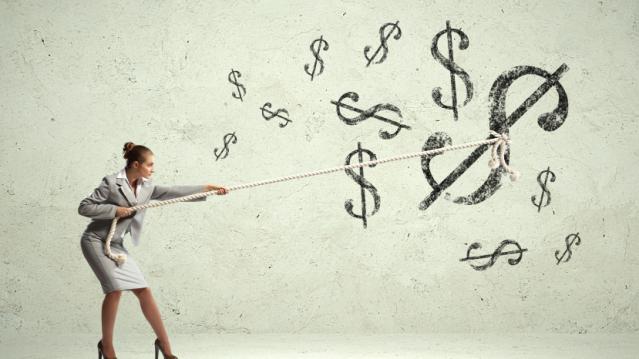Why Big Salary Raises May Be Gone for Good

If you’re hoping for a big raise this year, prepare to be disappointed. Sure, you might be among the lucky people who get a healthy bump in salary, but a recent survey by professional services firm Towers Watson found that companies are planning pay raises of 3 percent on average for workers.
A new survey by human resources and management consultancy Aon Hewitt confirms that forecast: Even as the job market continues to improve, salaried employees can expect their base pay to increase 3 percent, or about a percentage point smaller than the raises employers were handing out 20 years ago.
Related: Full Employment Alone Won’t Solve Problem of Stagnating Wages
From 1996 through 2000, salaries went up by about 4.1 percent a year, according to Aon Hewitt data. From 2011 through 2015, annual raises have averaged about 2.8 percent. And even as we get further away from the recession, that downward shift appears to be permanent, as companies look to keep a lid on their fixed costs.
"The modest increases we've seen over the past 20 years are an indication that employers have changed their compensation strategies for good, and we shouldn't expect to see salary increases revert back to 4 percent or higher levels that were commonplace in the past," said Aon Hewitt’s Ken Abosch.
Related: Obama Moves Toward Executive Action on Overtime Pay
On the bright side, at least for some workers, employers are planning on doling out more money in the form of bonuses, cash awards and other so-called variable pay. Aon Hewitt’s survey found that workers will see their variable pay rise by 12.9 percent this year.
That shift favors higher-level white-collar workers, since companies have been cutting back on bonus and incentive pay for clerical or technical workers. In 2011, only 43 percent of companies gave bonuses or other cash incentives to those hourly workers eligible for overtime pay, down from 61 percent in 2009, according to data Aon Hewitt shared with The Washington Post. On the other hand, 93 percent of companies offer incentive programs to employees with a fixed salary.
As Abosch told the Post: “It’s the haves and the have nots.”
Top Reads From The Fiscal Times
- How a Biden-Warren Ticket Could Transform the Campaign
- The 10 Best States for Property Taxes
- Air Force Brushes off $27 Billion Accounting Error
Chart of the Day: Long Way to Go on Coronavirus Testing

The White House on Friday unveiled plans for a new effort to ramp up testing for Covid-19, which experts say is an essential part of limiting the spread of the virus. This chart from Vox gives a sense of just how far the U.S. has to go to catch up to other countries that are dealing with the pandemic, including South Korea, the leading virus screener with 3,692 tests per million people. The U.S., by comparison, has done about 23 tests per million people as of March 12.
After Spending $2 Billion, Air Force Bails Out on Planned Upgrades of B-2 Bombers

The Air Force has scrapped a planned upgrade of its B-2 stealth bomber fleet — even after spending $2 billion on the effort — because defense contractor Northrup Grumman didn’t have the necessary software expertise to complete the project on time and on budget, Bloomberg’s Anthony Capaccio reports, citing the Pentagon’s chief weapons buyer.
Ellen Lord, the undersecretary of defense for acquisition and sustainment, told reporters that the nearly $2 billion that had already been spent on the program wasn’t wasted because “we are still going to get upgraded electronic displays.”
Big Hurdle for Sanders’ Plan to Cancel Student Debt

Bernie Sanders wants to eliminate $1.6 trillion in student debt, to be paid for by a tax on financial transactions, but doing so won’t be easy, says Josh Mitchell of The Wall Street Journal.
The main problem for Sanders is that most Americans don’t support the plan, with 57% of respondents in a poll last fall saying they oppose the idea of canceling all student debt. And the politics are particularly thorny for Sanders as he prepares for a likely general election run, Mitchell says: “Among the strongest opponents are groups Democrats hope to peel away from President Trump: Rust Belt voters, independents, whites, men and voters in rural areas.”
Number of the Day: $7 Million

That’s how much Michael Bloomberg is spending per day in his pursuit of the Democratic presidential nomination, according to new monthly filings with the Federal Election Commission. “In January alone, Bloomberg dropped more than $220 million on his free-spending presidential campaign,” The Hill says. “That breaks down to about $7.1 million a day, $300,000 an hour or $5,000 per minute.”

